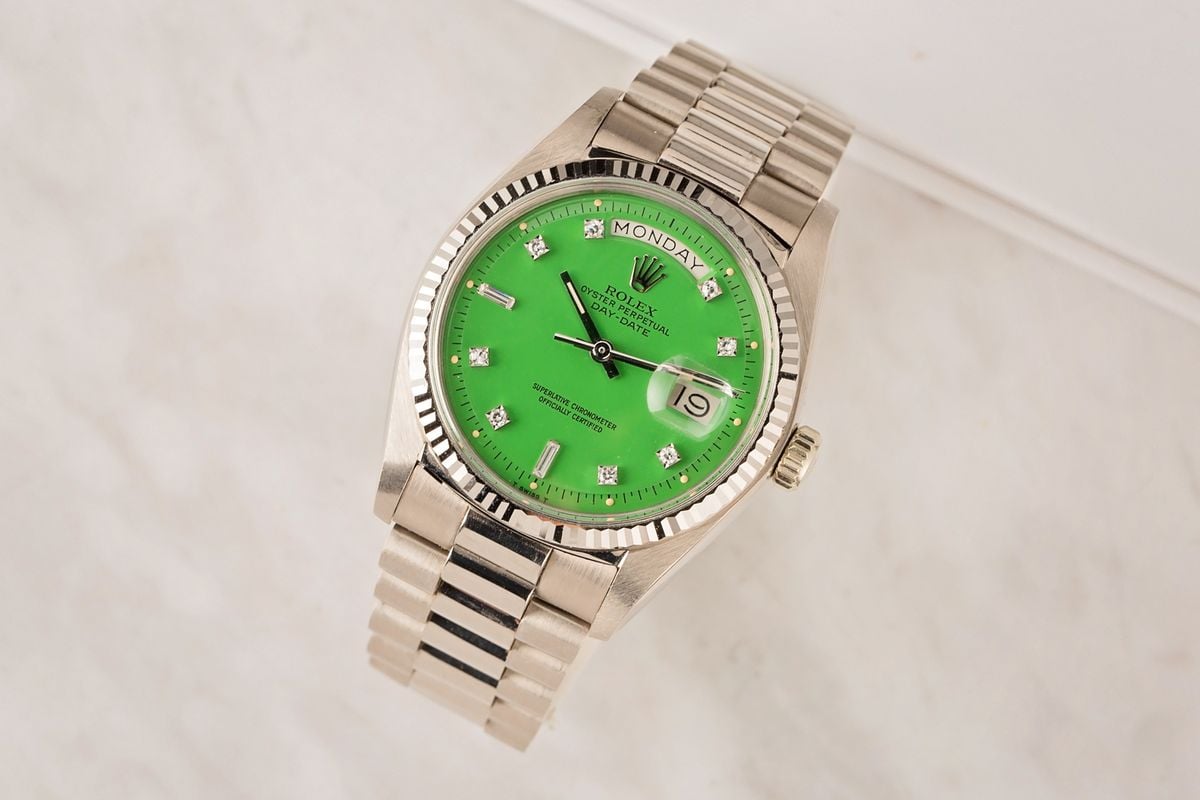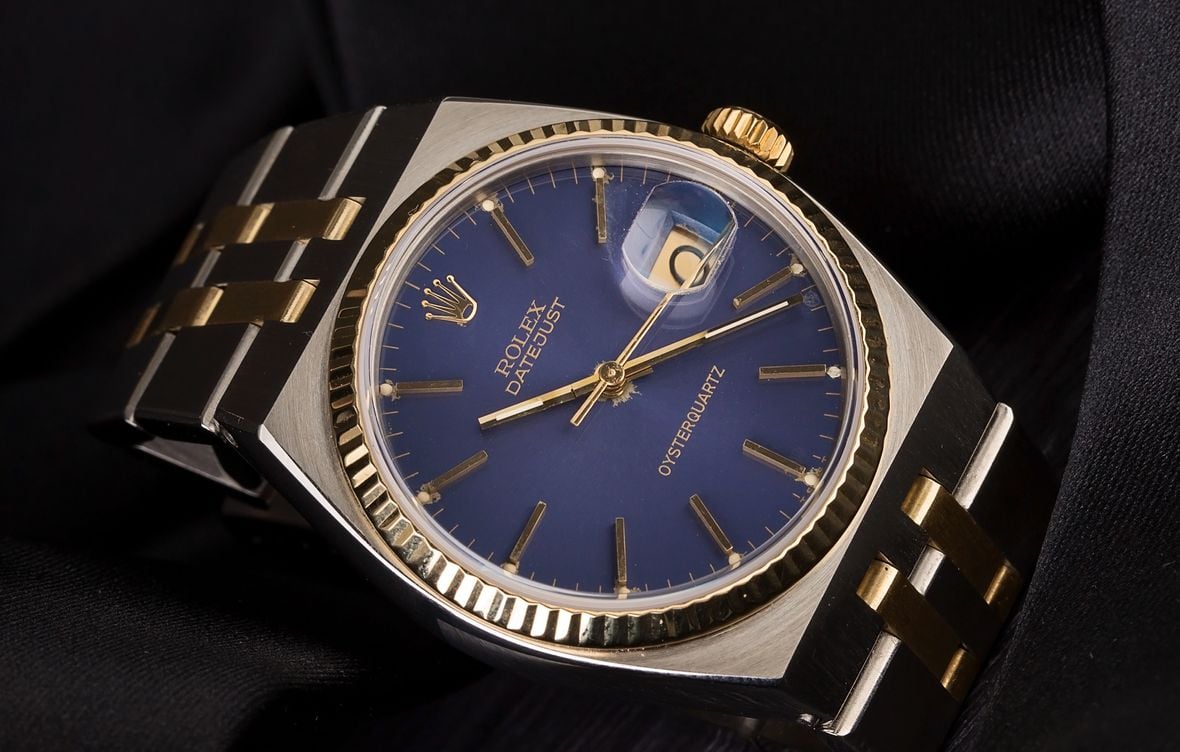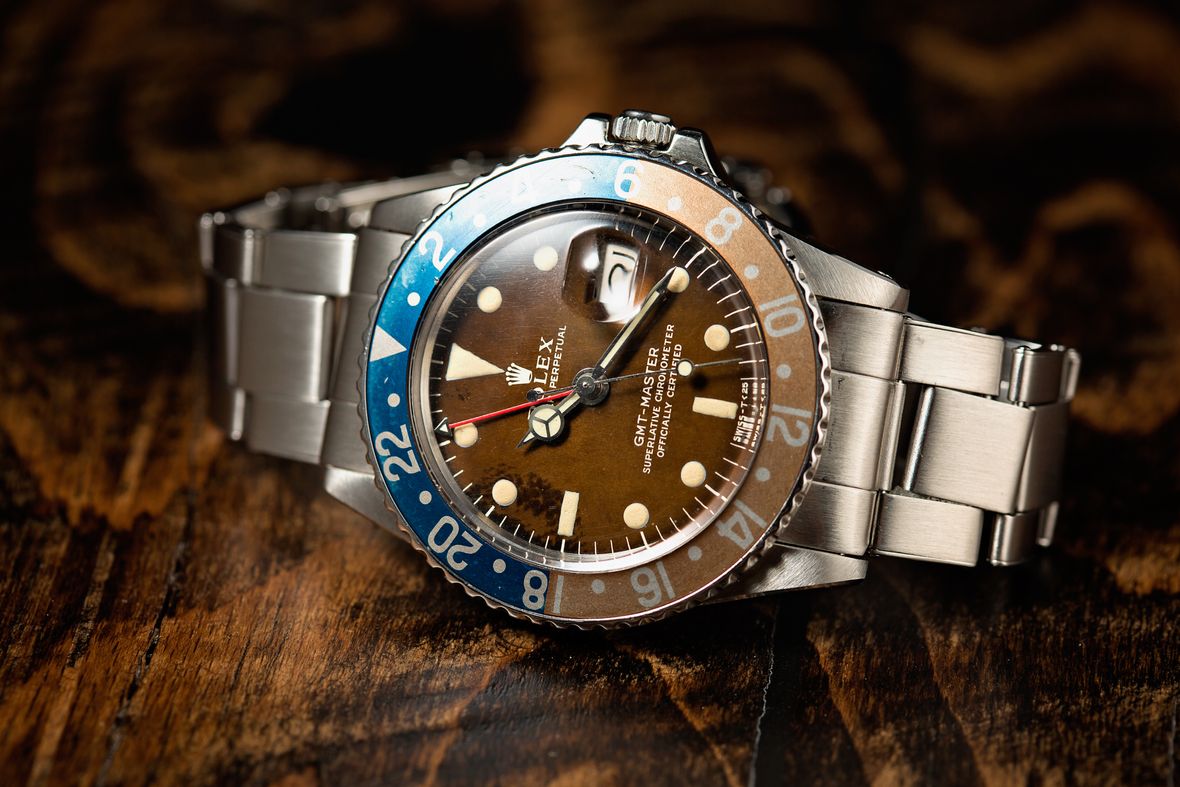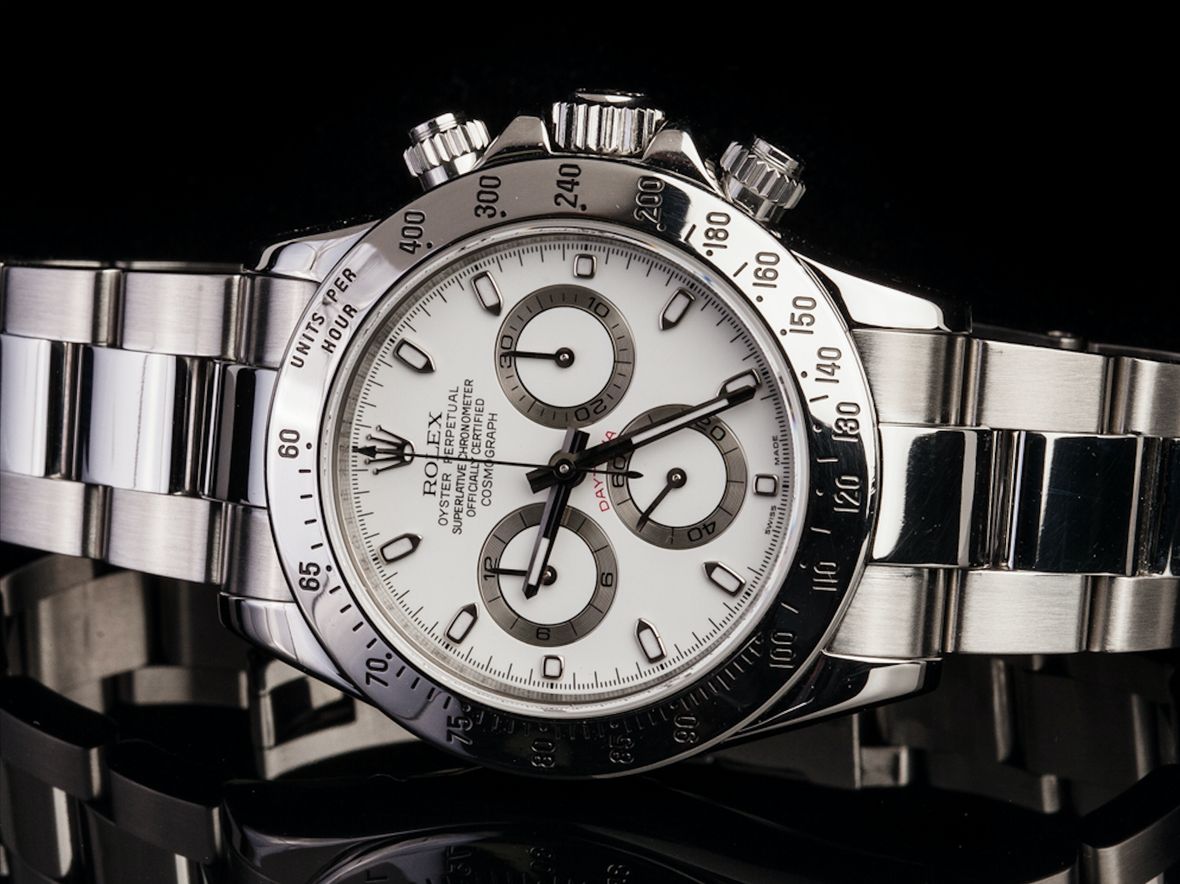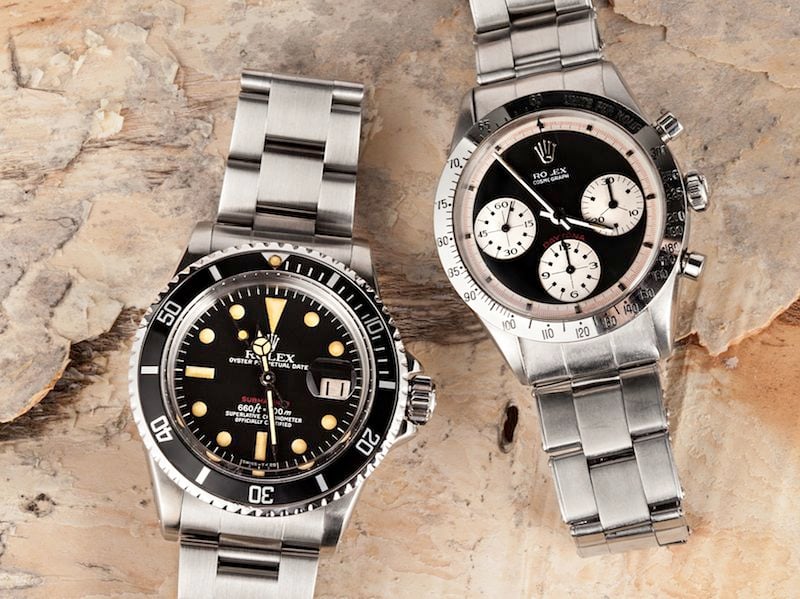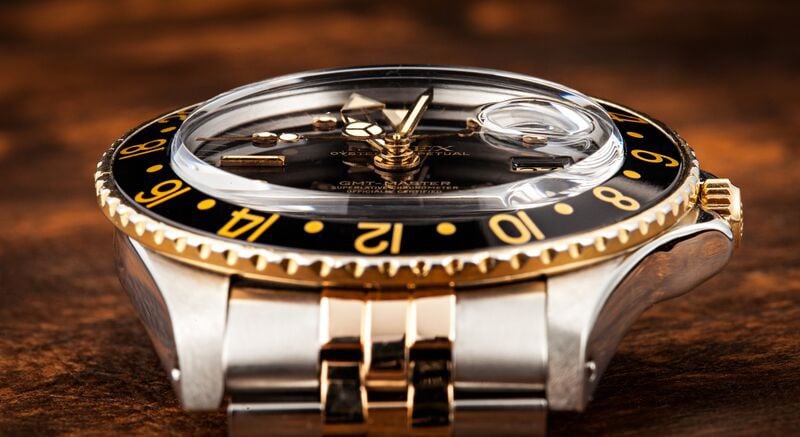The 1970s were a strange, volatile time for the entire watch industry, including Rolex. While ‘The Crown’ wasn’t subject to any buy-outs or consolidations (or flat-out going under) like many other legacy watchmaking brands did during this decade, the quartz crisis still undeniably influenced Rolex’s design choices and movements.
Of course, the 1970s were also an iconic and incredibly influential era for fashion and style. So, in this ultimate guide to vintage Rolex watches from the 1970s, we’re going to walk you through this remarkable and pivotal decade, explaining what led to these changes and highlighting the interesting (and highly collectible) watches that came out of it. Ready to wind back the time?
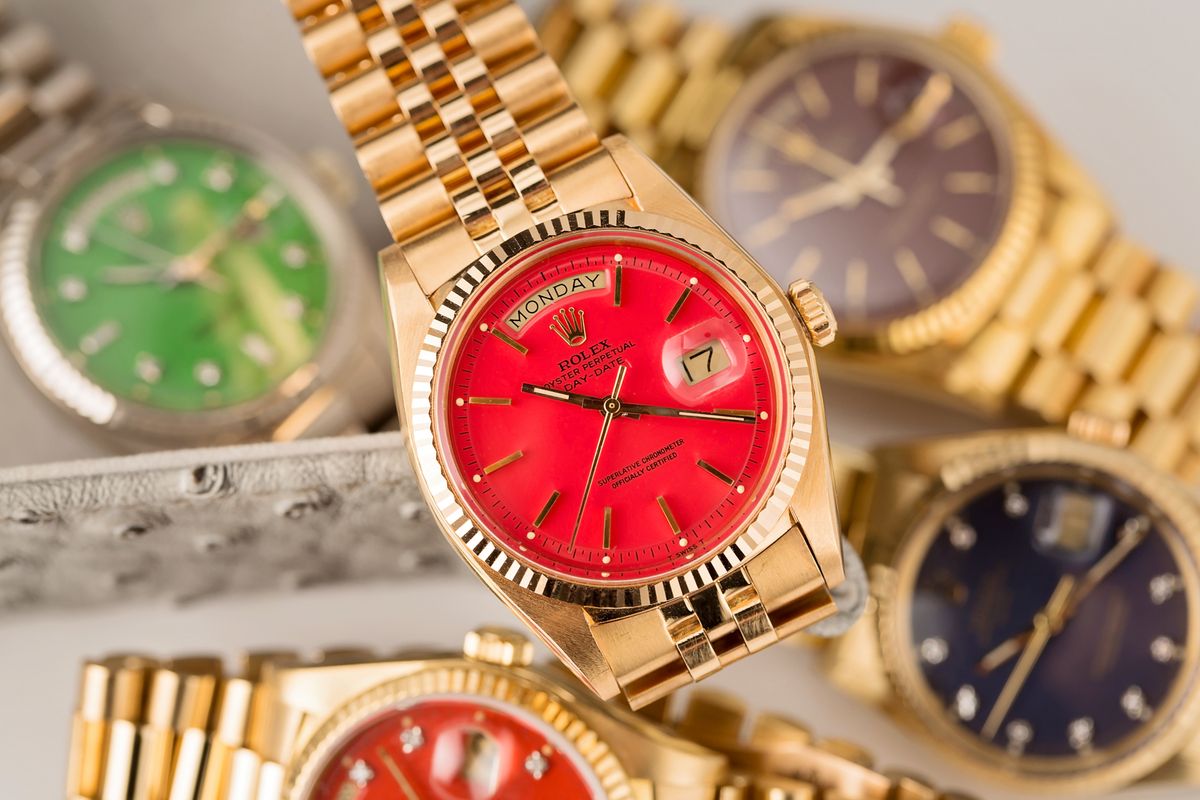
1970s Rolex Timeline
1970: Rolex introduces the reference 5100 powered by the Beta 21 movement, which was made after uniting with other Swiss watch brands to create the Centre Electronique Horloger, a group that banded together to make electronic watch movements. It is also the first time Rolex used a synthetic sapphire crystal instead of an acrylic crystal.
1971: Rolex introduces the Oyster Perpetual Explorer II with the reference 1655.
1972: Rolex embarks on a 5-year journey to conceptualize, design, develop, and test its own in-house quartz movement.
1975: The last Rolex ‘Red Submariner’ ref. 1680 watches are sold retail.
1977: Rolex introduces its in-house quartz movements (cal. 5035 for the Oysterquartz Datejust; cal. 5055 for the Oysterquartz Date-Date).
1978: Rolex launches the Sea-Dweller 4000 ref. 16660.
1979: Rolex discontinues the Submariner Date ref. 1680.
Click here for our Ultimate Buying Guide on Rolex watches.
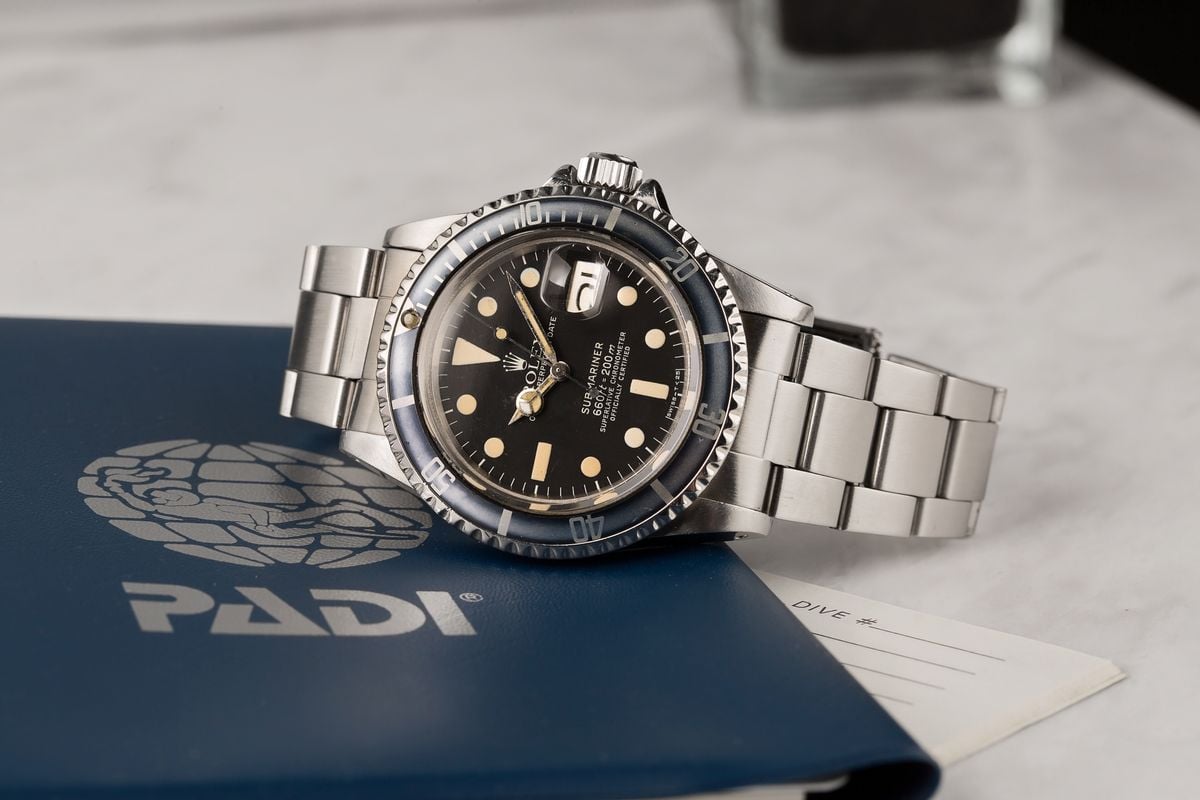
What was the Quartz Crisis?
The Quartz Crisis is a period of time that began in the 1970s and extended into the early 1980s when the mechanical watch industry was being outsold by inexpensive quartz timepieces that offered timekeeping performance beyond could not be achieved by traditional mechanical movements. For the first time in history, the wristwatch became cheap to manufacture and cheap for consumers to own. Quartz movements were less expensive, more accurate, and could be produced at a scale far greater than mechanical movements at the time. Brands from Japan such as Seiko, Citizen, and Casio embraced the technology fully, flooding the U.S. and European markets with their new products and taking a huge market share.
It is known as the ‘Crisis’ because the quartz timekeeping technology entirely upended the entire legacy Swiss watchmaking industry. At the time, Quartz watches were seen as cutting-edge technology and were able to offer previously unattainable levels of accuracy, enticing more people to start buying and wearing watches that boasted quartz technology.
The Swiss watch industry was largely revitalized by Swatch, who we know today for its inexpensive, quartz fashion watches. Swatch took the industry in a new direction, bringing the attention back to Swiss manufacturing, despite its modern, non-traditional quartz technology. Many of the other luxury Swiss watch brands who survived the crisis also tried their hand at the quartz movement trend, producing luxury-leaning timepieces with quartz movements in an effort to capitalize on the trend and keep their customer’s attention.
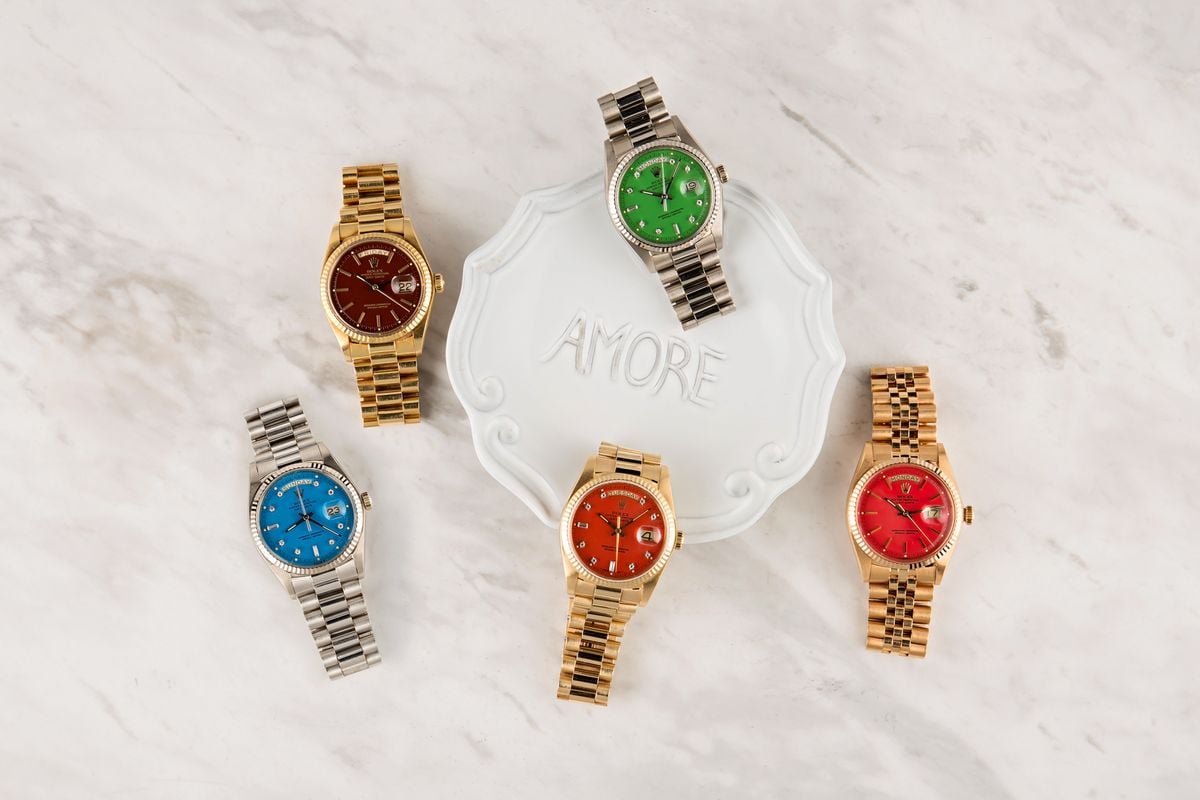
What did Rolex do during the Quartz Crisis?
In the 1970s André Heiniger was running Rolex – only the second person to do so after the brand’s founder Hans Wilsdorf. Heiniger saw the Quartz Crisis as a flaky trend, one that would suffer the same fate as technology like the transistor radio. He believed that after several years of relishing the funky designs and then-novel nature of quartz watches, people would eventually turn back to the luxury of a mechanical watch: a luxury that Switzerland had perfected for centuries. Heiniger was partially correct- eventually, people did end up longing for the luxury of a mechanical, Swiss-made watch. However, quartz is still the go-to technology for the movements used in most watches today, and they have penetrated the luxury market quite deeply, especially in regards to women’s watches.
With that in mind, Heiniger still had to wait out the trend and ride the wave through the crisis. While Rolex always kept the emphasis on its mechanical movements, Heiniger steered the company towards creating two quartz models based on the brand’s best-selling Datejust and Day-Date collections. After collaborating with a number of other Swiss watch brands to create Switzerland’s first quartz movement, Rolex then set out on its own to create an in-house quartz movement that was able to fit inside its legendary waterproof Oyster cases.
The product of an expensive and lengthy endeavor that took almost half a decade, Rolex’s quartz watches were originally positioned as premium options within its catalog, priced significantly higher than comparable Datejust and Day-Date watches with traditional mechanical movements. However, during the Quartz Crisis, Rolex also doubled down on its efforts to create high-performance sports watches. During this decade we saw the introduction of the Explorer II collection, along with key updates to the Sea-Dweller. Furthermore, during this decade Rolex launched a new family of mechanical movements to replace the cal. 15xx series. The Caliber 30xx range ushered the company into a new era as the industry put itself back together after the Quartz Crisis.
Most Notable & Collectable Rolex Watches From the 1970s
Rolex Stella Dial Watches
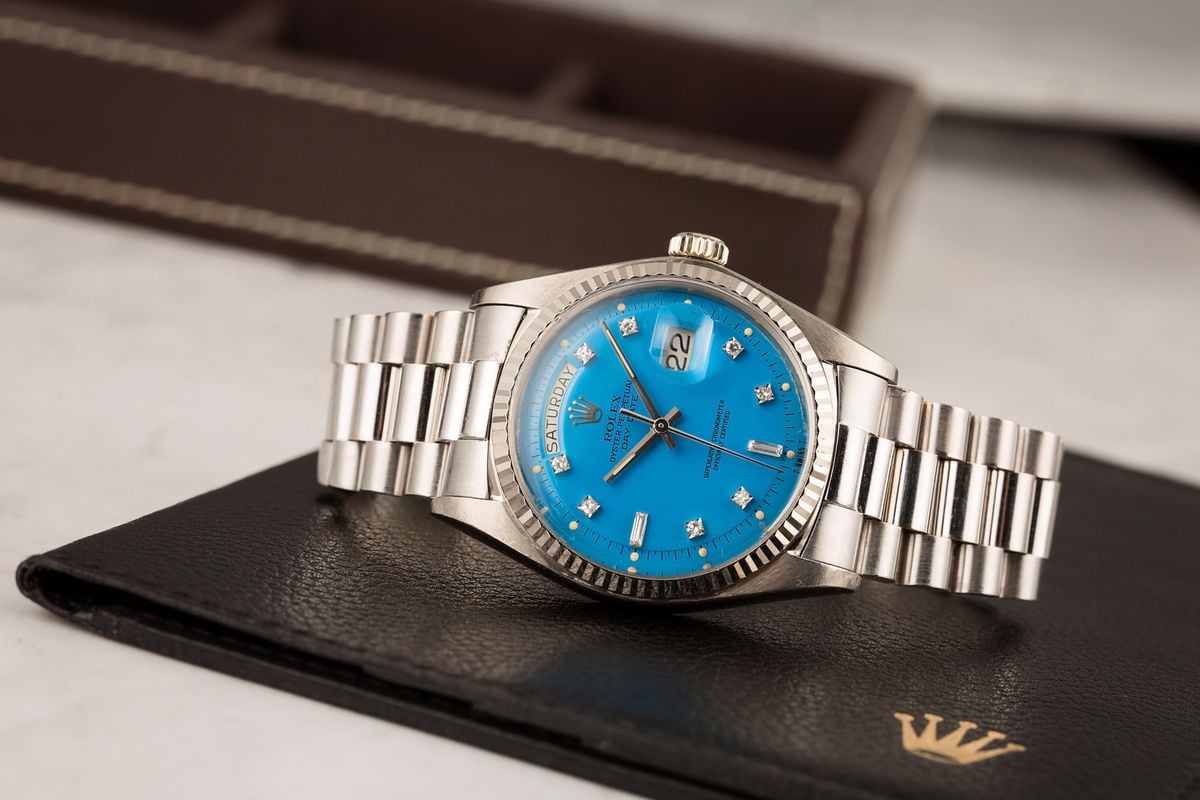
There may not be anything as funky and emblematic of the 1970s than the quirky and colorful Rolex Stella dials. Rumored to have originally been designed for the Middle Eastern market, Rolex introduced a collection of Day-Date and Datejust models with brightly-colored lacquer and stone dials in the 1970s.
This was a huge diversion from the golden and glitzy, yet relatively sober appearance of the classic Rolex President that had largely remained consistent since its introduction in 1956. The overall effect was akin to the fusion of styles that can be observed in the psychedelic paint job on John Lennon’s Rolls Royce at the time. With the Stella dials, Rolex was appealing to a completely different kind of buyer, taking something traditional and timeless and making it modern and trendy. However, while these dials are now incredibly collectible today, they didn’t quite resonate with buyers at the time, likely because those with the funkiest styles weren’t buying Rolex watches back then.
The colors ranged from retina-threateningly bright pink to orange, green, turquoise, and a host of other colors that will never be found in nature. Although production spilled over into the 1980s, Rolex’s Stella dials experienced rather sluggish sales, and so only a relatively small number of these lacquered, multi-layered enamel dials were ever produced. One mystery that still remains is why we call them ‘Stella’ dials. Some think that it is in reference to American artist Frank Stella and his choice of vivid colors, others think it is after the Latin word for “star” due to their bright appearance. However, since this is an informal title, we will likely never know the truth behind the origin of this particular Rolex nickname.
Over the past few years, prices for vintage Rolex Stella dial pieces have been climbing steadily and significantly, with the versatile 36mm dimensions leading many women towards them too, in addition to their growing number of male buyers. While this style of dial definitely isn’t for everyone, you can’t deny that Rolex Stella dials are emblematic of the 1970s and mark a truly unusual and important time in Rolex’s history.
Rolex Explorer II ref. 1655
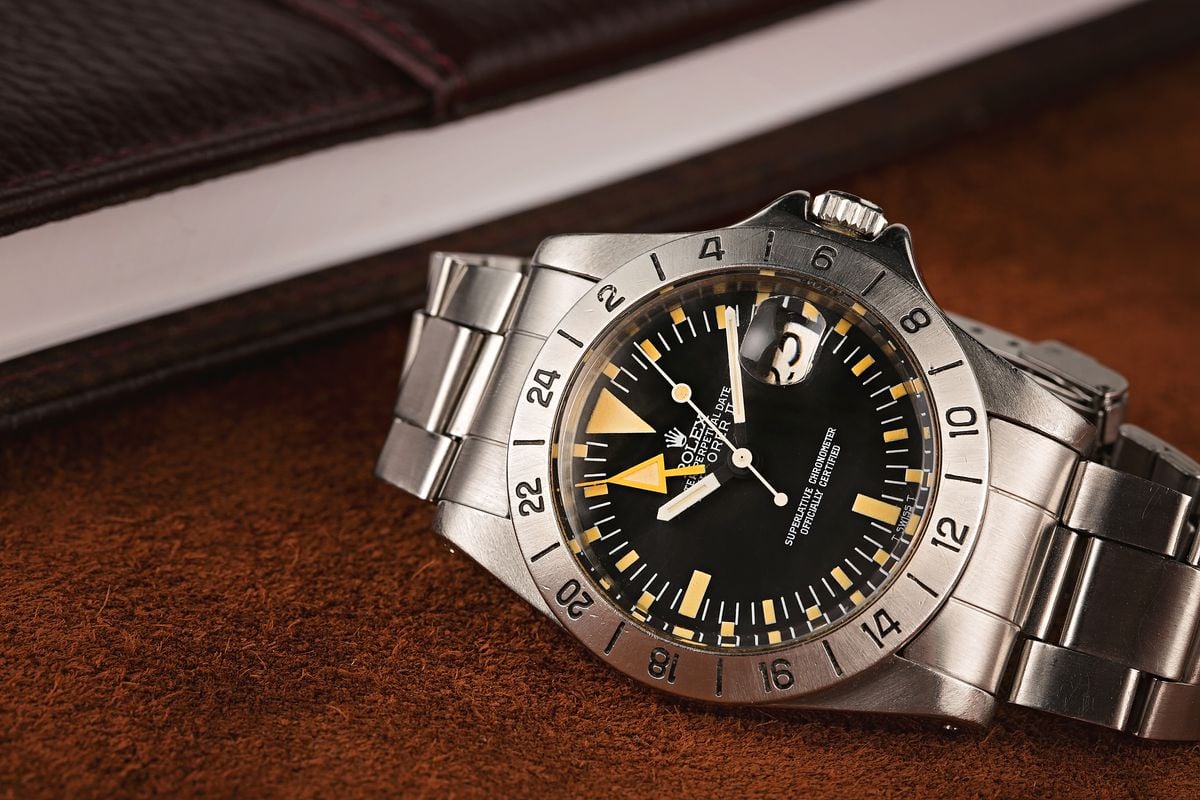
The Rolex Explorer II was released in 1971 as a watch for cave explorers whose mission it was to go to the farthest corners below the surface of the earth. An evolution of the original Explorer that was presented in 1953 to celebrate Sir Edmund Hillary and Tenzing Norgay successfully reaching the summit of Mount Everest, the Oyster Perpetual Explorer II was created to build upon that daring legacy, offering a set of features specifically aimed at those working for prolonged periods without sunlight.
The first Rolex Explorer II (reference 1655) was worn by speleologists, volcanologists, and polar and jungle explorers around the globe. Powered by the 26-jewel Caliber 1575 movement, the watch features a number of characteristics specifically for keeping track of day and night hours in environments without sunlight. These features included a date function, a stationary stainless steel bezel with 24-markings, a 100-meter depth rating, and a large, brightly colored 24-hour hand to be used with the bezel as a prominent reference for AM and PM hours.
Production of the ref. 1655 lasted into the 1980s, and just like the Explorer II watches that Rolex produces today, the reference 1655 was only ever manufactured in stainless steel, with absolutely no precious metal or two-tone options available. Additionally, like many of Rolex’s other sports watches at the time, the reference 1655 Explorer II was exclusively offered with a black dial. However, all subsequent Explorer II references have offered the option of either black or white dials.
Both Olympic ski champion Jean-Claude Killy and Hollywood actor Steve McQueen were famously associated with the Rolex Explorer II ref. 1655. Numerous photos exist of Jean-Claude Killy wearing the Explorer II ref. 1655 and the skier was even featured in a number of Rolex advertising campaigns at the time, but there are strangely zero photos of Steve McQueen actually wearing a reference 1655, as it was a Rolex Submariner that the famous Hollywood actor actually wore, both on-screen and in his personal life.
Rolex Sea-Dweller 4000 ref. 16660
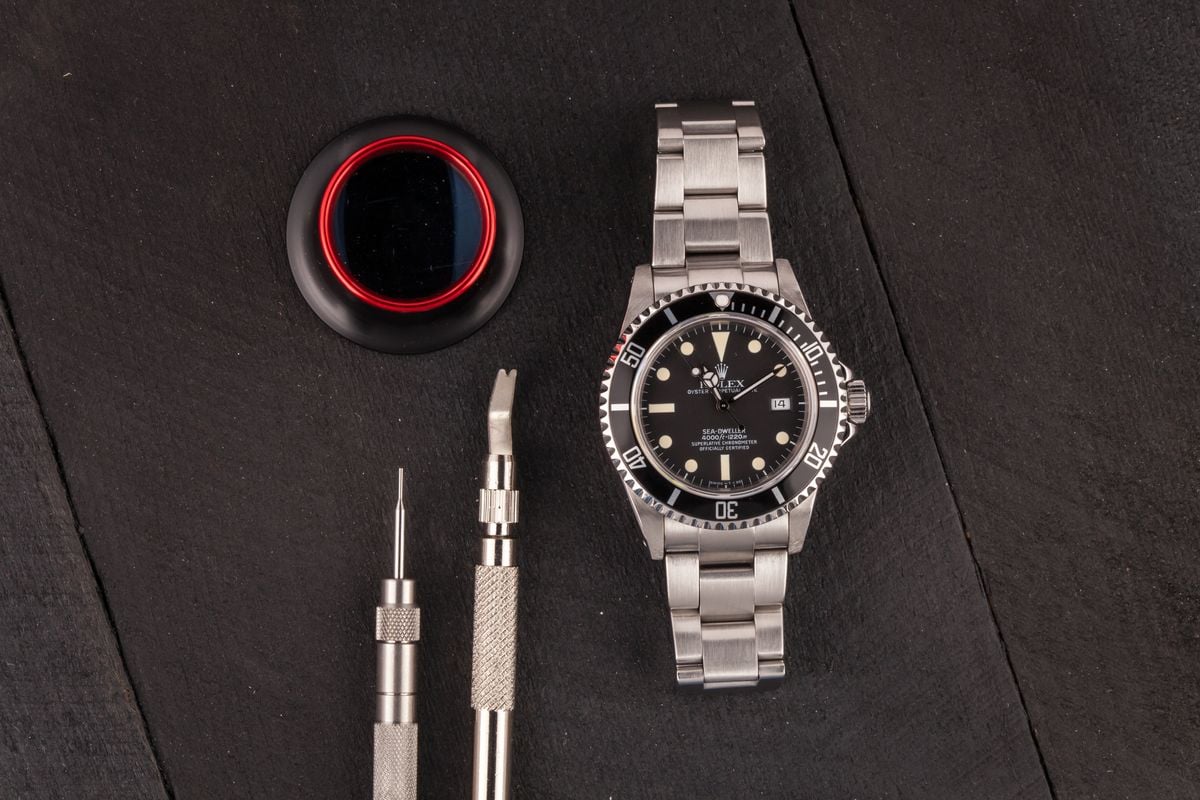
While much of the world was still focusing on quartz movement technology, Rolex was still working away on improving and expanding its high-performance, mechanical sports watches, such as the Sea-Dweller. The Rolex Sea-Dweller was already an important and pivotal watch since its release in 1967, as it was the first watch for civilian purchase that was designed with a helium escape valve. It also boasted an impressive 2,000 feet of water resistance, so when the new Rolex Sea-Dweller 4000 ref. 16660 was released in 1979 and increased the watch’s water resistance fuerther, the world took notice.
The Rolex Sea-Dweller 4000 features a unidirectional rotating timing bezel (for increased diver safety), a thick sapphire crystal (rather than acrylic), a larger and more advanced helium release valve, and an improved depth rating of 1,220 meters (4,000 feet). With a thick, 40mm case crafted entirely from stainless steel, the original Rolex Sea-Dweller 4000 also runs on the Caliber 3035 movement, which beats at a higher frequency of 28,800bph and includes a quick-set function for the date.
Rolex Oysterquartz
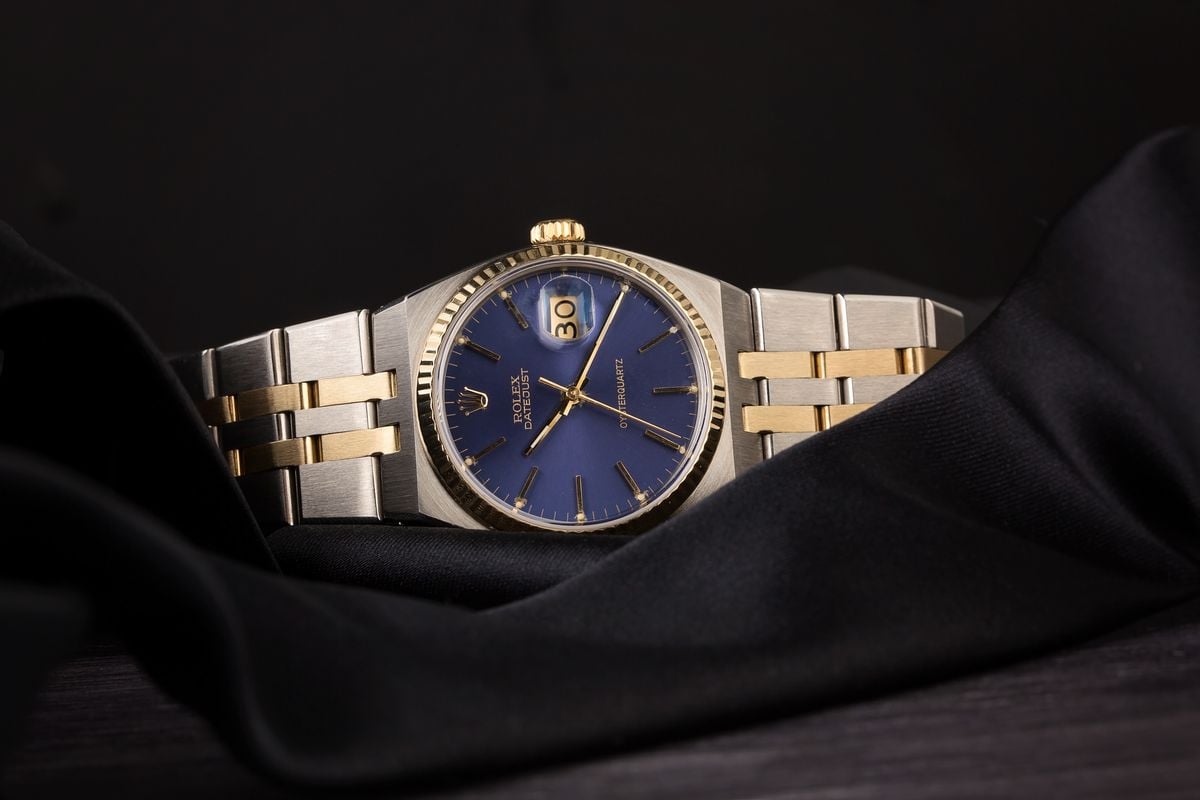
When we say Rolex Oysterquartz we mean two models: the Datejust and Day-Date. Rolex only ever used its in-house quartz movements in these two watches, which we’ll detail here below. But first, 5 essential facts to know about Rolex’s Oysterquartz watches and movements.
1. It Took Five Years To Complete The Oysterquartz Movement
Beginning in 1972, Rolex took five years to conceptualize, design, develop, and test its own in-house quartz movements. In 1977, the brand introduced the Caliber 5035 for the Oysterquartz Datejust and the Caliber 5055 for the Oysterquartz Date-Date models. The Rolex quartz movements included 11 jewels and a 32khz oscillator, classifying them as modern marvels upon their launch.
2. The Precursor To The Oysterquartz Was The Rolex ref. 5100
Before manufacturing its own quartz movement, Rolex united with 20 other Swiss watch brands to form the Centre Electronique Horloger, whose mission was to create electronic watch movements. The result was the Beta 21 movement which was used by numerous Swiss watch brands at the time, including in the limited-edition Rolex reference 5100 in solid gold.
3. The Rolex Oysterquartz Was In Production For 25 Years
While the Oysterquartz was a product of the 1970s, it actually remained in production for approximately 25 years, with Rolex still offering Oysterquartz Datejust and Day-Date watches into the early 2000s.
4. Less Than 25,000 Oysterquartz Watches Were Ever Produced
Although it remained in production for 25 years, it’s estimated that fewer than 25,000 Oysterquartz models were ever created. Compared to the number of mechanical Datejust and Day-Date watches that Rolex produced during that time, this is an incredibly small number.
5. An Oysterquartz Watch Went to the Top of Mount Everest
In 1978, Reinhold Messner became the first to climb Mount Everest without using supplemental oxygen tanks, and on his wrist was a stainless steel Rolex Oysterquartz Datejust.
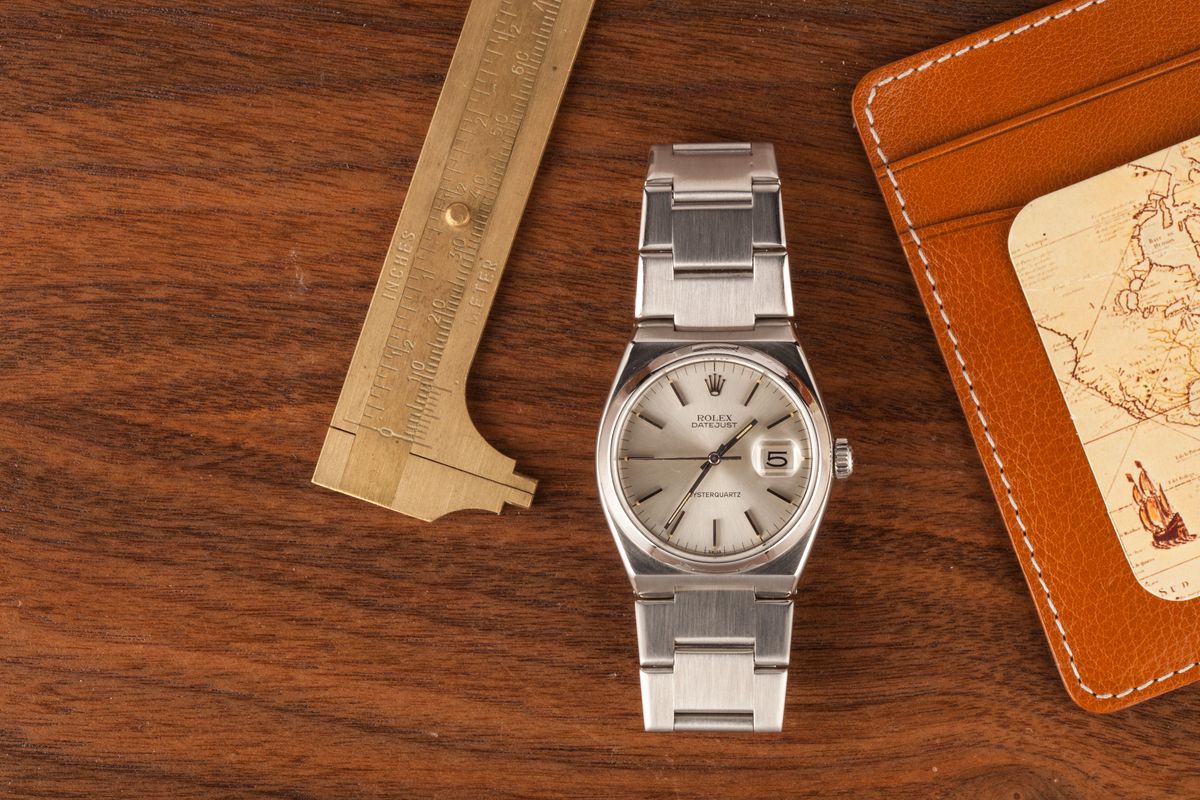
Rolex Oysterquartz Watches from the 1970s
When Rolex finally unveiled its Oysterquartz models in 1977, what made them truly unique were their in-house movements. There was the cal. 5035 which was fitted inside quartz-powered Datejust watches, alongside the cal. 5055, which was used to power the equivalent Oysterquartz Day-Date. Rolex didn’t want to entirely reinvent the wheel, so both movements shared a number of the same components that were already inside the new generation of traditional mechanical movements (the Cal. 3035 and Cal. 3055) that were produced to power the recently-released automatic versions of each watch.
Interestingly, the underlying design of Rolex’s quartz mechanism was largely based on the concept of a conventional escapement with the key exceptions being electronics and the pulse motor. However, the timekeeping performance of Rolex’s quartz movements was leaps and bounds better than anything possible with a traditional mechanical movement. Compared to the Beta-21, Rolex used an oscillator four times faster and also outfitted it with a thermistor, making it one of the first analog thermo-compensation movements ever built. Quartz technology along with Rolex’s pursuit of perfection made these watches incredibly accurate, allowing them to easily pass the necessary tests for COSC chronometer-certification.
A unique feature about the Oysterquartz movements is how loud they tick, particularly compared to its mechanical movement powered siblings. You’ll also notice that the seconds hand jumps in 1-second increments – a telltale sign of a quartz watch – rather than sweep around the dial like the seconds hand on a traditional mechanical watch.
Rolex Oysterquartz Datejust
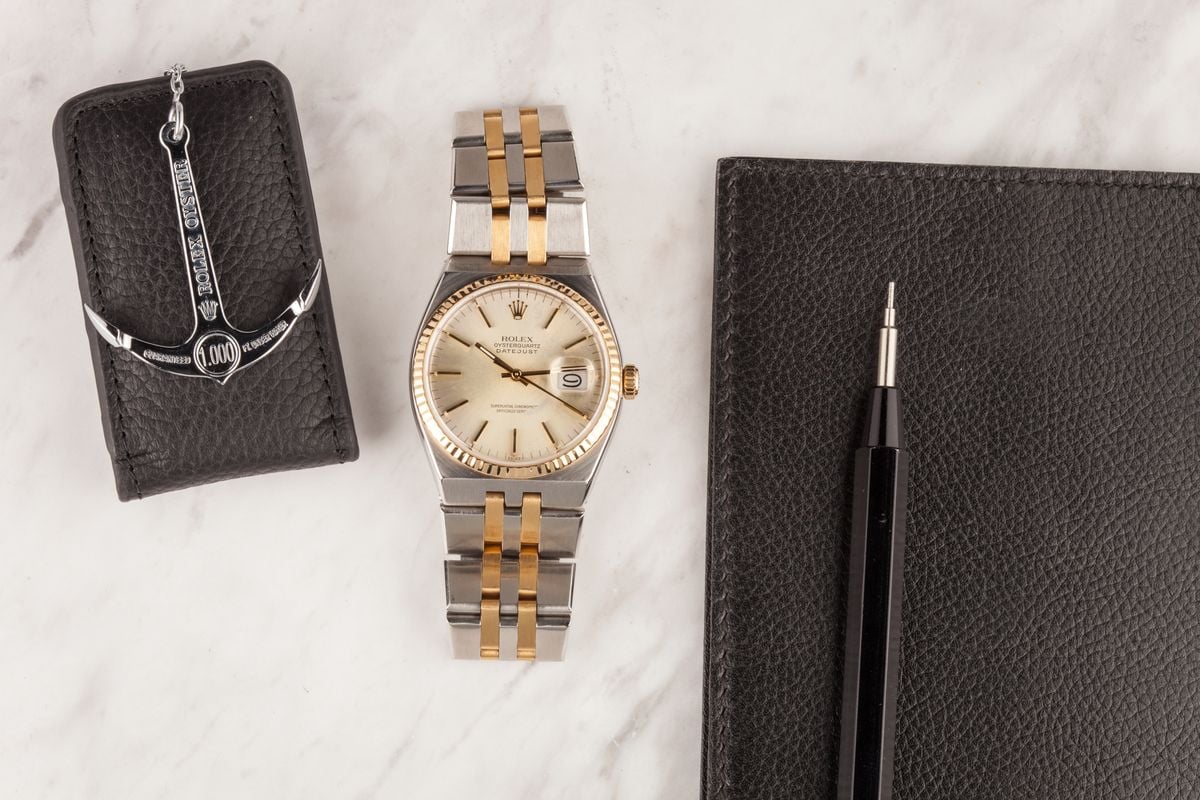
Rolex’s CEO Andre Heiniger was adamant that no one would mistake the electronic versions of his world-famous watches for their mechanical counterparts. Consequently, all Oysterquartz models were outfitted with sharp, angular cases and integrated bracelets making them appear bolder and larger on the wrist.
The updated look screams 1970s in the best way – truly reflecting the taste, style, and trends of the time. Like the various Gerald Genta-designed watches such as the Audemars Piguet Royal Oak and the Patek Philippe Nautilus that would go on to define the decade, the Oysterquartz Datejust was characterized by sharp lines and an integrated bracelet. Despite representing a significant aesthetic deviation from the classic mechanical version of the watch, the Rolex Oysterquartz Datejust was available in a variety of metals and configurations.
The Oysterquartz Datejust was offered in three variations: stainless steel (reference 17000), Rolesor stainless steel and yellow gold (reference 17013), and Rolesor stainless steel and white gold (reference 17014). As part of the greater Datejust collection, the Oysterquartz Datejust also featured the most emblematic features of the model like the date window at 3 o’clock magnified by the Cyclops lens, despite the significant aesthetic overhaul.
Rolex Oysterquartz Day-Date President
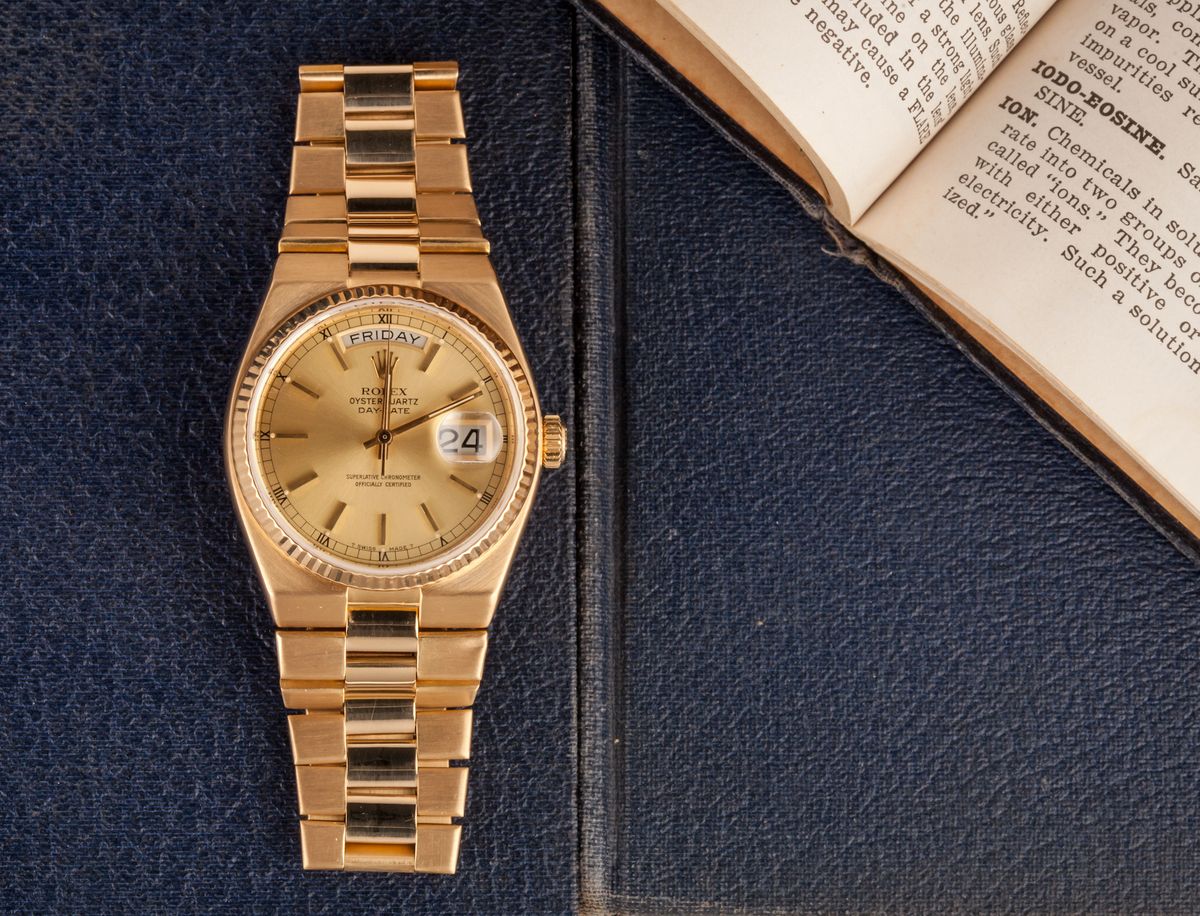
Visually distinct and incredibly rare, the Rolex Oysterquartz Day-Date watches are unlike any other models that the brand has ever put forward. At the time of its release, Rolex’s Oysterquartz watches were already premium options within the brand’s catalog, with the Day-Date Oysterquartz representing one of the most expensive watches available and a significant price increase compared to the standard mechanical versions of Rolex’s flagship watch collection.
Fitting with the rest of the Oysterquartz line, the Oysterquartz Day-Date is characterized by its angular 36mm Oyster case paired with an angular version of the brand’s signature President bracelet that offers an integrated appearance. Keeping with the tradition of the flagship Day-Date line, the Oysterquartz variant was only ever available in precious metals – both 18k yellow gold (reference 19018) and white gold (reference 19019). Naturally, the Oysterquartz Day-Date President still features distinct President characteristics, like the date window under a Cyclops lens and the day of the week written out in full and displayed through an aperture at the top of the dial.
Given that the Oysterquartz Day-Date President was significantly more luxurious than both the Date and the Datejust, Rolex also unveiled some special references featuring diamonds, gemstones, and other interesting design elements. Of particular interest is the Rolex Day-Date Oysterquartz ref. 19028 with pyramid design details on the bezel, bracelet, and hour-markers.
Rolex ref. 5100 Beta 21
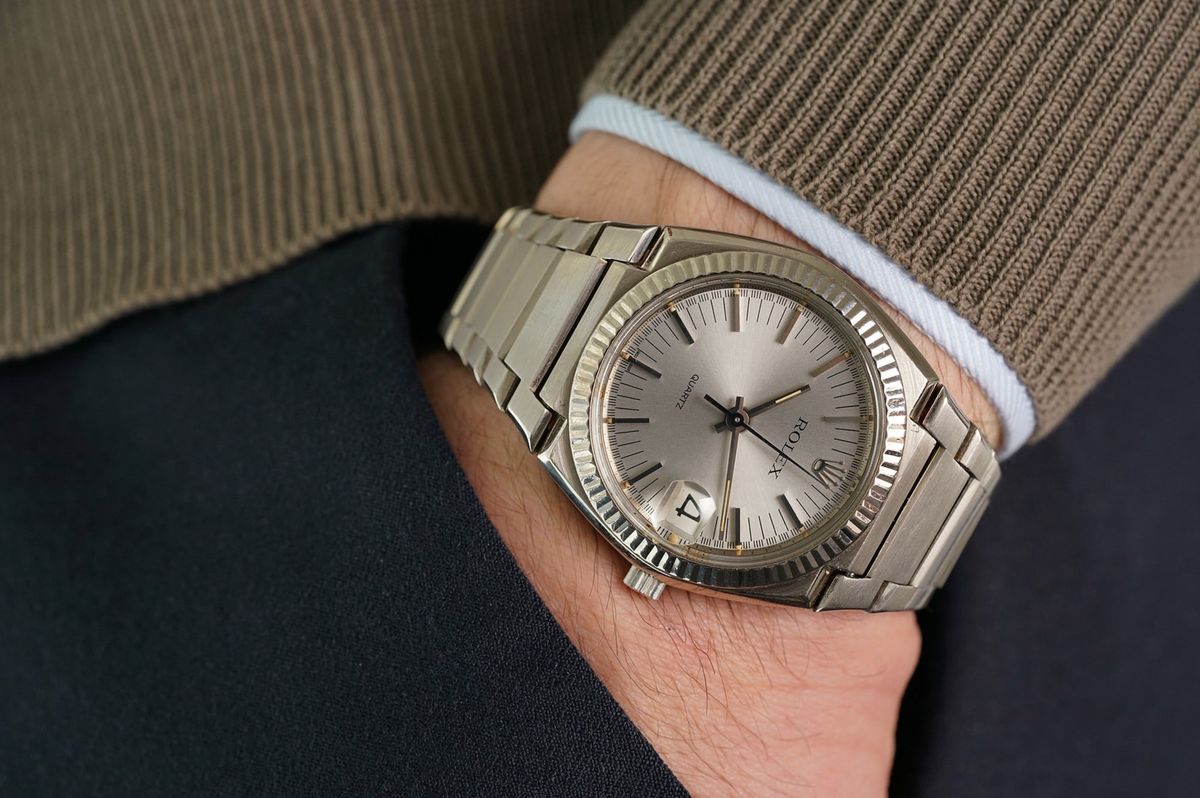
The reference 5100 was the first Rolex watch to ever feature a quartz movement. Powered by the Beta 21 from the Centre Electronique Horloger partnership, Rolex quickly sold out of its 1,000 limited edition models almost as soon as the watch was announced. Not only was the quartz movement inside the ref. 5100 a first for Rolex, but the design of the watch was also unique. The reference 5100 was also the first Rolex to ever feature a sapphire crystal instead of an acrylic crystal. Lastly, the case was fashioned from either 18k yellow or white gold and featured distinctly angular edges and the watch’s limited edition number out of 1,000 engraved on the side.
Despite the success of the reference 5100, Rolex did not believe that it was in its best interest to offer watches that were equipped with the same exact movements as so many other Swiss watch companies. More importantly, the size and unusual dimensions of the Beta 21 movement that it could not fit in Rolex’s legendary Oyster Case – the very technology that had served as the backbone of the brand’s reputation since it first made an appearance in 1926. Not long after releasing the ref. 5100, Rolex left its partnership with the Centre Electronique Horloger and began the development of its own in-house quartz movements which would later go into the Oysterquartz line.
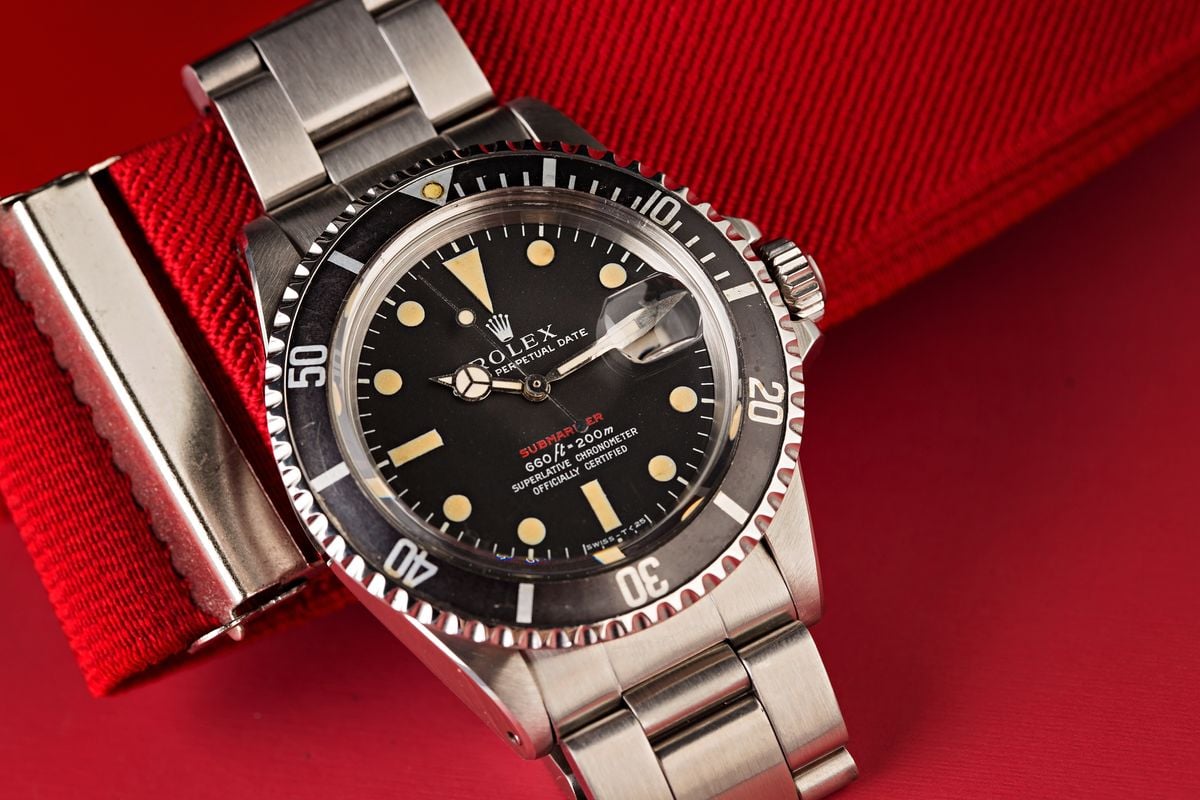
Submariner Date 1680 and the ‘Submariner Red’
While the Rolex Submariner Date ref. 1680 was created in 1966 and officially launched to the public the following year, the actual reference itself remained in production through 1979. This was the first time Rolex offered their iconic dive watch with a date complication, immediately setting it apart from all previous references. The introduction of a date-displaying model also gave way to the ‘Red Submariner’ dial, which is an absolute icon today among collectors because it was the only time that the color red has ever appeared on the dial of a Submariner Date watch.
Today, only a relative handful of the original ‘Red Submariner’ dials from the 1970s are still in existence. This is because the vast majority of reference 1680 watches that required replacement dials ended up receiving the later-era version with all-white text. Plus, experts estimate that Rolex only ever made these ‘Red Submariner’ watches until about 1973, with the very latest possible examples dating to 1975.
Consequently, ‘Red Submariner’ watches from the 1970s are among the most collectible vintage Rolex models on the planet. Also of interest to collectors, Rolex made a bunch of small adjustments to their ‘Red Submariner’ dials throughout the decade, resulting in a range of collectible dial variations.
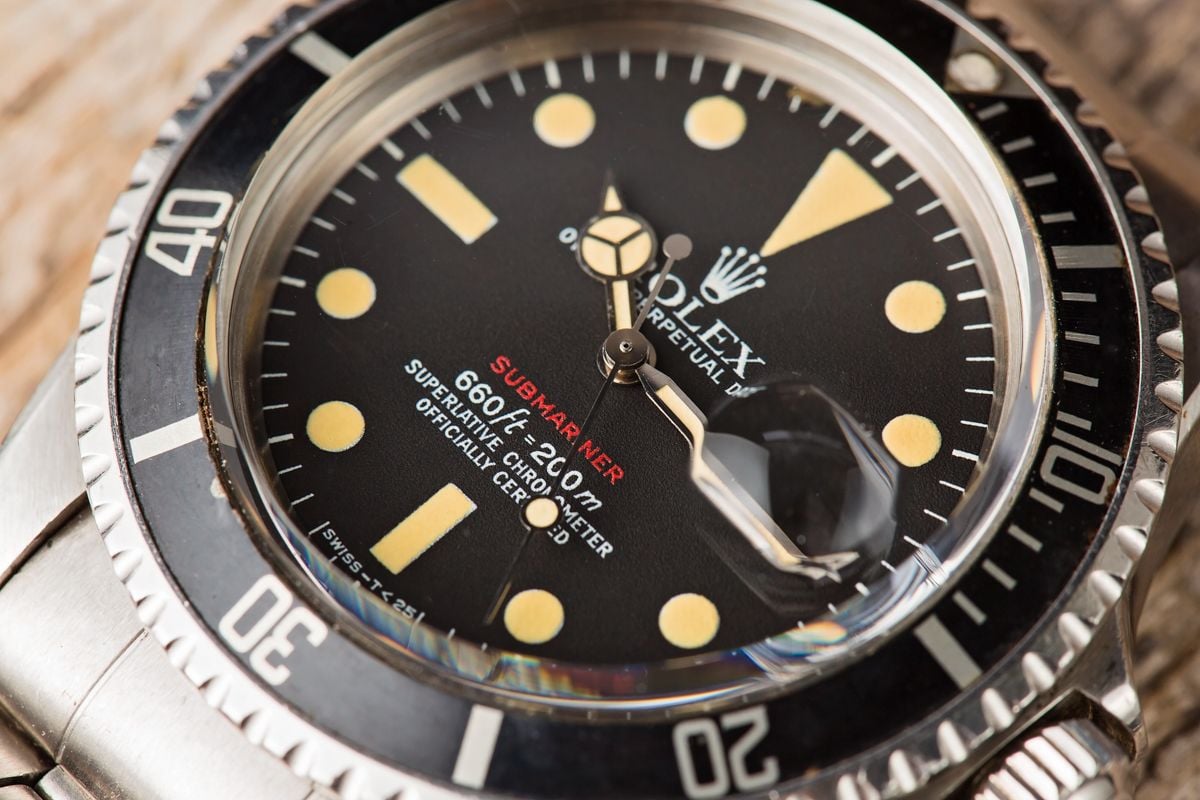
Rolex ‘Red Submariner’ Dial Variations from the 1970s
Below are all of the different Red Submariner dial variations (frequently referred to as “marks” or “makes”) that appeared during the 1970s. What’s missing from this list is the very first iteration of Red Submariner dials – the MK1 dials – however, that is because they were produced in the late 1960s rather than the 1970s. These ‘Red Submariner’ dial variations are estimated to be found on reference 1680 watches until somewhere around the mid-1970s. After that, they were replaced with dials that feature all-white text.
1. Red Submariner MK2 Dial
The first MK2 dial appeared at the start of the decade in 1970, as did the MK3 dial, which is nearly identical in its overall appearance. However, there are subtle differences between these two variations of Red Submariner dials. MK2 dials are of the meters-first variety and will have the red ‘SUBMARINER’ name printed on top of white. Additionally, MK2 dials will feature open sixes, and the top of the ‘f’ does not extend as far as on MK1 Red Submariner dials.
2. Red Submariner MK3 Dial
Red Submariner MK3 dials of the 1970s are incredibly similar to MK2 dials and are also of the meters-first variety with open sixes. However, while MK2 dials have the red ‘SUBMARINER’ text printed on top of white, MK3 dials will have it printed directly onto the dial surface. With MK3 dials, the ‘f’ in the depth rating is also shorter than it appears on MK2 Red Submariner dials.
3. Red Submariner MK4 Dial
Mk4 Red Submariner dials are the earliest versions of the feet-first variety, first appearing near the very end of 1970 and going on to be featured for the next couple of years. MK4 dials feature the red ‘SUBMARINER’ text printed on top of white, along with very distinct open sixes for the depth rating.
4. Red Submariner MK5 Dial
Just like the MK4 version, the MK5 Red Submariner dials are of the feet-first variety with open sixes, although the sixes are less open on MK5 dials compared to the MK4. Unlike the MK4 dials, the MK5 style features the red ‘SUBMARINER’ name printed directly on the dial surface without a white base layer. Additionally, the MK5 dials remained in use slightly longer than the MK4, despite first appearing around a relatively similar time.
5. Red Submariner MK6 Dial
The MK6 dial is the last Red Submariner dial to be fitted with tritium hour markers. Like other later-era Red Submariner dials, the MK6 is of the feet-first variety, and just like the MK5, it features its red ‘SUBMARINER’ name printed directly on the dial surface without the additional white base layer. However, while the MK5 features open sixes, the MK6 features closed sixes, and the ‘S’ in the word “Superlative” has a noticeably more curved appearance.
6. Bonus Dial: Red Submariner LumiNova Service Dial
When you own a Rolex watch, you can send it to Rolex for service or repairs. Damaged or broken parts will be replaced, and this can also include the dial of the watch. Around the mid-1970s, Rolex stopped producing the ref. 1680 with dials that featured the ‘SUBMARINER’ name in red, and instead switched to dials with all white text (sometimes referred to as MK7 dials); however, these are not Red Submariner dials as the ‘SUBMARINER’ name is not in red letters. With that in mind, there are certain Red Submariner dials that were not originally fitted to Red Sub watches and were instead later finished with photoreactive LumiNova and used as service replacement parts. Consequently, this style of Red Submariner dial is known as the Red Submariner Service Dial.
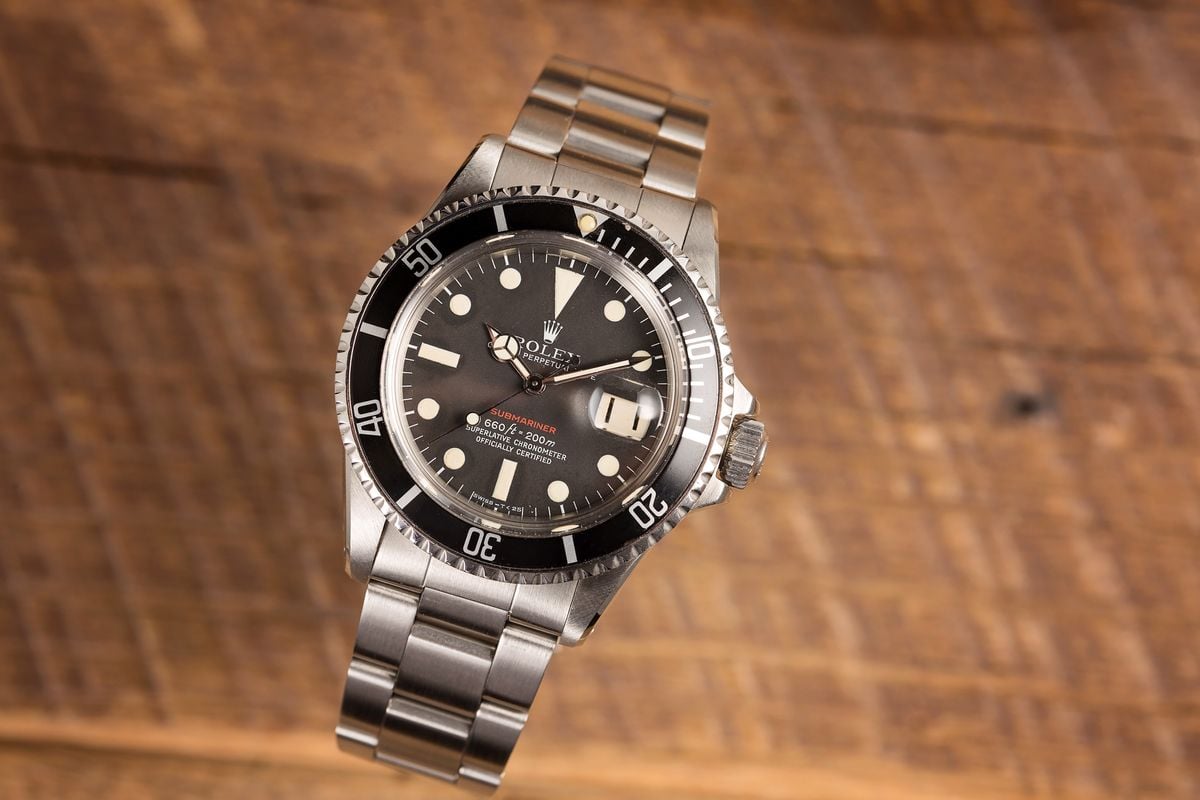
Frequently Asked Questions About 1970s Rolex Watches
What is the price of a 1970s Rolex?
The price of a 1970s Rolex can vary greatly depending on the kind of model and the materials of its construction. However, many of these vintage Rolex watches hold great value and some models sit at the apex of vintage Rolex collecting. The 1970s were an interesting time for the watch world as a whole, and a lot of the watches that were born during this unique era are now highly collectible and expensive today. The least expensive models will start out in the thousands, but the sky is the limit for vintage Rolex 1970s watches, and some examples with exceptional provenances have been known to sell for more than six-figures.
What is a Rolex 5100 Beta?
The reference 5100 is Rolex’s first quartz watch that featured the Beta 21 movement which was created in collaboration with 20 other Swiss watch brands as part of the Centre Electronique Horloger as a way to give Switzerland a chance to combat the Quartz Crisis. The Beta 21 movement was used by numerous Swiss watch brands, but the only Rolex watch to be powered by the Beta 21 movement is the limited-edition reference 5100.
What is an Oysterquartz?
Rolex produced a line of luxury timepieces outfitted with in-house, quartz calibers starting in 1977. There were the Oysterquartz Datejust and Oysterquartz Day-Date models, both featuring classic Oyster cases with stylishly sharp edges and integrated bracelets.
What watches were made by Rolex in the 1970s?
To combat the Quartz Crisis, Rolex rolled out their Oysterquartz line of watches powered by in-house quartz movements. Rolex also saw quartz as a trend in luxury watchmaking and kept development efforts going on its mechanical movements, alongside purpose-built sports watches like the Explorer II and the Sea-Dweller.
Is the ‘Red Submariner’ from the 1970s?
The ‘Red Submariner’ was first released in 1967 and was produced as late as the mid-1970s. Because of its short production run, the Red Submariner is one of the most sought-after vintage Rolex watches in the world.
What was the Quartz Crisis?
The Quartz Crisis was a period of time that began in the 1970s and extended into the early 1980s when the mechanical watch industry was being outsold by quartz-powered timepieces from Asia. Rolex withstood the crisis, but many Swiss watchmaking brands went bankrupt or were bought-out during this highly pivotal time.
Is there a Rolex Presidential from the 1970s?
Yes, there are actually two very different Rolex Presidential watches from this decade. During the 1970s, Rolex was producing both the mechanical Day-Date President and the Oysterquartz Day-Date President, and each version was available in a number of different configurations.
Are there 1970 Rolex watches for sale?
Rolex only sells new watches, so the only place you will fine 1970s Rolex watches for sale is the pre-owned market. We offer a variety of vintage Rolex watches for sale from the 1970s and list the specific year of production for each one that appears on our website.
